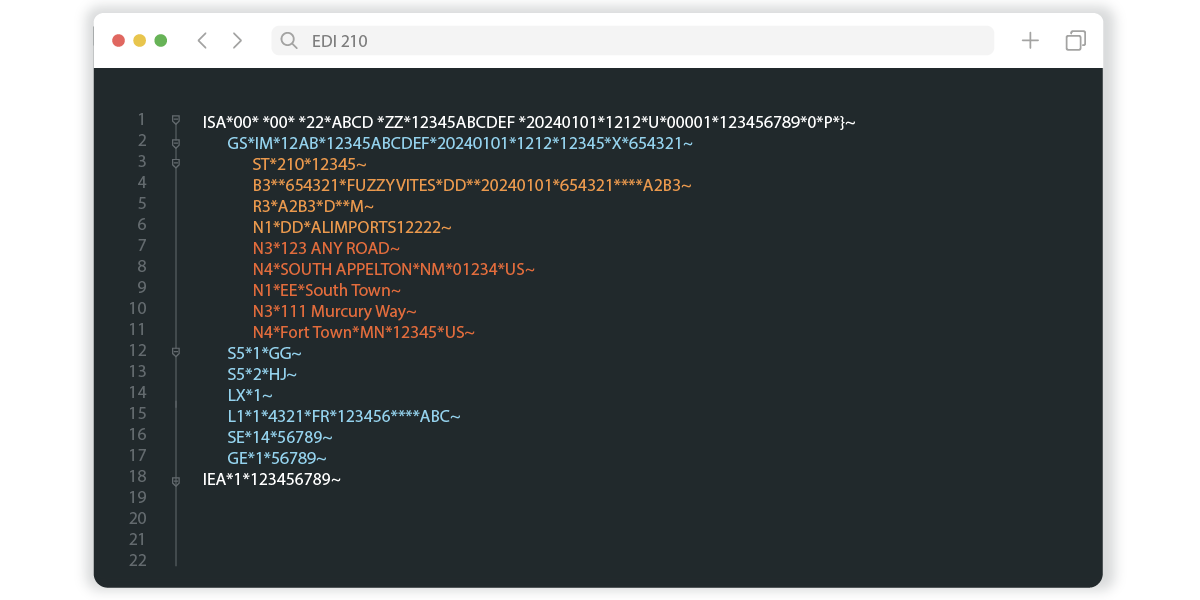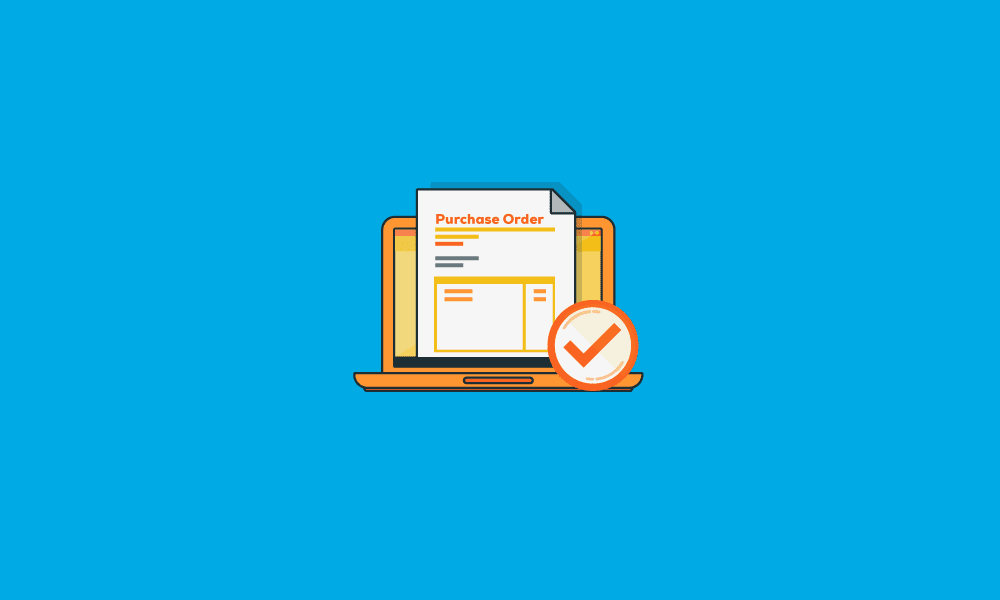The EDI 210 format
The EDI 210 is often customized to meet the specific needs of the parties involved in the transaction and is an important tool within the logistics and transportation sectors of supply chains.

Here is a high-level overview of the standard segments typically found in an EDI 210 document:
B3: Beginning segment for carrier's invoice
C3: Currency identifier
N9: Extended reference information
N1-N4: Name and Address Information
G62: Date/time qualifier
R3: Route information
LX-L1: Line Item Details
TDS: Total monetary value summary
How is the EDI 210 used?
Invoice submission:
The primary use of the EDI 210 document is for carriers to electronically submit freight invoices to shippers, consignees or third-party logistics providers. It automates the billing process for transportation services.
Detailed breakdown:
It provides a detailed breakdown of charges related to the transportation of goods, including line-item details of services provided, rates and charges.
Tracking and auditing:
The EDI 210 can be used by companies to track invoicing and payment processes for freight services. It also facilitates easier auditing of transportation invoices for accuracy.
Documentation and record-keeping:
It often works in conjunction with other EDI documents, such as the EDI 204 (Motor Carrier Load Tender) for shipment instructions, and the EDI 214 (Transportation Carrier Shipment Status Message) for tracking shipment status. This integration streamlines communication and documentation between carriers and shippers.
Benefits of using the EDI 210 Motor Carrier Freight Details and Invoice
While the EDI 210 document is used specifically for electronic processing of freight invoices, the benefits it brings to a supply chain are far-reaching. It not only streamlines the billing process but also contributes to overall operational efficiency, cost reduction and enhanced supply chain visibility.
Improved efficiency:
Reduced errors:
Cost savings:
Enhanced visibility:
Better compliance:
Data analytics:
Common issues regarding EDI 210
Trading partner specifications should give insight as to which shipping charges are acceptable and how these charges should be coded in the EDI 210. If the Motor Carrier Freight Details and Invoice document is not in alignment with the shipper’s expectations, the invoice may be rejected and payment could be delayed.
Automate EDI 210 Motor Carrier Freight Details and Invoice with SPS Commerce

Managing ongoing EDI tasks can be complex and time-consuming. Full-service EDI providers like SPS Commerce deliver EDI technology and associated staffing resources responsible for customizing, optimizing and operating your EDI solution.
SPS communicates directly with your trading partners to manage connectivity, setup, requirements, updates and support efforts. SPS also takes ownership of understanding your trading partner requirements and making map changes.
SPS Fulfillment proactively monitors and optimizes your solution to prevent errors and minimize data entry.
Interested in learning more about our EDI solution?
Additional EDI Resources
Enter a virtual library of information about EDI for suppliers, vendors and distributors to provide you with the product knowledge you need to power your business.
Ultimate List of EDI Transactions
Here are some of the most common documents and transactions that are supported through EDI automation.
Five Top EDI Documents to Automate
When you automate your most-used EDI documents, it can significantly cut down keystrokes and speed up processes.
EDI Glossary
Terminology including retail definitions, order management models, supply chain roles, software and distribution channels.
EDI for Suppliers & Vendors
Discover how leading vendor and supplier businesses are serving their customers better with EDI solutions from SPS Commerce.




